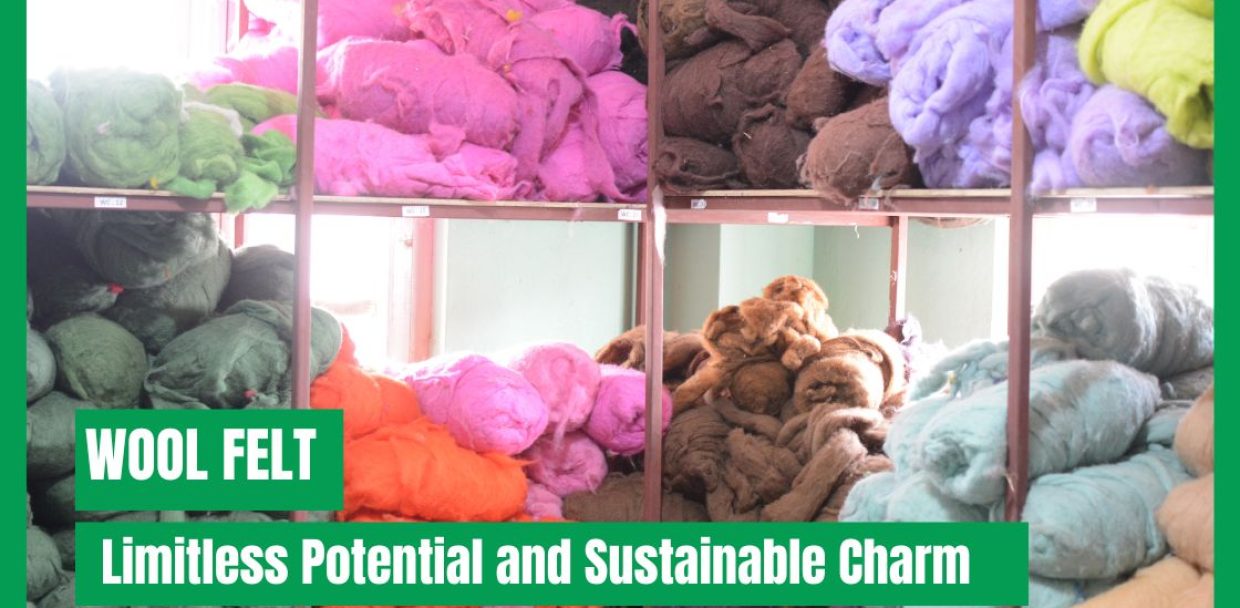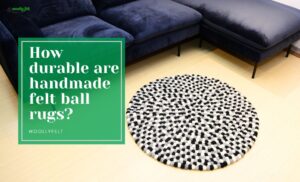Wool felt has a rich history that spans centuries, captivating hearts with its timeless appeal. Whether you’re a seasoned crafting enthusiast, a design aficionado, or simply curious about this extraordinary fabric, this article is here to accompany you on a delightful journey of information and insights.
Picture a fabric that effortlessly wraps you in warmth, providing natural insulation even on the chilliest of days, or that can gently wick away moisture, ensuring your comfort in any environment.
These are just a few remarkable qualities that make wool felt an extraordinary fabric, seamlessly blending functionality and practicality. However, the true beauty of wool felt lies in its versatility.
 Using various felt fabrics, you can unleash your creativity and bring your artistic visions to life. From fashion to interior design and beyond, wool felt finds its place in many creative endeavors, allowing you to express your unique style in delightful ways.
But the actual benefits of wool felt extend beyond its versatility. With its sustainable production practices and natural composition, wool felt embodies an eco-friendly approach that aligns with our desire for a greener world. Additionally, its hypoallergenic properties make it a perfect choice for those with sensitivities or allergies.
Whether you’re a wool felt enthusiast or new to its charms, this article will be your companion, offering insights, inspiration, and practical knowledge to help you make the most of this fabulous fabric.
Get ready to immerse yourself in wool felt’s versatility, craftsmanship, and boundless potential.
Using various felt fabrics, you can unleash your creativity and bring your artistic visions to life. From fashion to interior design and beyond, wool felt finds its place in many creative endeavors, allowing you to express your unique style in delightful ways.
But the actual benefits of wool felt extend beyond its versatility. With its sustainable production practices and natural composition, wool felt embodies an eco-friendly approach that aligns with our desire for a greener world. Additionally, its hypoallergenic properties make it a perfect choice for those with sensitivities or allergies.
Whether you’re a wool felt enthusiast or new to its charms, this article will be your companion, offering insights, inspiration, and practical knowledge to help you make the most of this fabulous fabric.
Get ready to immerse yourself in wool felt’s versatility, craftsmanship, and boundless potential.


 When it comes to interior design, wool felt becomes a transformative element in creating warm and inviting spaces. This versatile material is used for upholstery, wall coverings, and acoustic panels, adding texture, depth, and a sense of coziness to any environment. Wool felt’s natural sound-absorbing properties make it an ideal choice for reducing noise levels and creating acoustically balanced spaces in offices, theaters, and public venues.
In the automotive industry, wool felt plays a crucial role in providing insulation, soundproofing, and protection. It is used as a lining material in car interiors, offering comfort, durability, and enhanced thermal insulation. Wool felt’s ability to absorb and filter sound vibrations contributes to a quieter driving experience, making it a valuable component in automotive design.
Beyond fashion, interior design, and automotive applications, wool felt finds its way into a multitude of industries. In industrial settings, it serves as a protective material, providing cushioning and impact resistance in machinery and equipment. Its durability, heat resistance, and non-abrasive properties make it an ideal choice for gaskets, seals, and precision parts.
When it comes to interior design, wool felt becomes a transformative element in creating warm and inviting spaces. This versatile material is used for upholstery, wall coverings, and acoustic panels, adding texture, depth, and a sense of coziness to any environment. Wool felt’s natural sound-absorbing properties make it an ideal choice for reducing noise levels and creating acoustically balanced spaces in offices, theaters, and public venues.
In the automotive industry, wool felt plays a crucial role in providing insulation, soundproofing, and protection. It is used as a lining material in car interiors, offering comfort, durability, and enhanced thermal insulation. Wool felt’s ability to absorb and filter sound vibrations contributes to a quieter driving experience, making it a valuable component in automotive design.
Beyond fashion, interior design, and automotive applications, wool felt finds its way into a multitude of industries. In industrial settings, it serves as a protective material, providing cushioning and impact resistance in machinery and equipment. Its durability, heat resistance, and non-abrasive properties make it an ideal choice for gaskets, seals, and precision parts.
 Crafting enthusiasts have also embraced the versatility of wool felt, unleashing their creativity and imagination. From needle felting and appliqué to embroidery and toy-making, wool felt offers endless possibilities for creating unique and beautiful items. Its soft and malleable nature allows for intricate detailing and precise craftsmanship, making it a favorite among artisans and DIY enthusiasts.
The versatile applications of wool felt extend far and wide, making it an indispensable material across numerous industries and sectors. Its remarkable qualities and adaptability enable its seamless integration into diverse contexts, showcasing its timeless appeal and enduring relevance. Whether in fashion, interior design, automotive, industrial uses, or crafting projects, wool felt continues to captivate with its versatility, functionality, and aesthetic charm.
Crafting enthusiasts have also embraced the versatility of wool felt, unleashing their creativity and imagination. From needle felting and appliqué to embroidery and toy-making, wool felt offers endless possibilities for creating unique and beautiful items. Its soft and malleable nature allows for intricate detailing and precise craftsmanship, making it a favorite among artisans and DIY enthusiasts.
The versatile applications of wool felt extend far and wide, making it an indispensable material across numerous industries and sectors. Its remarkable qualities and adaptability enable its seamless integration into diverse contexts, showcasing its timeless appeal and enduring relevance. Whether in fashion, interior design, automotive, industrial uses, or crafting projects, wool felt continues to captivate with its versatility, functionality, and aesthetic charm.


 Using various felt fabrics, you can unleash your creativity and bring your artistic visions to life. From fashion to interior design and beyond, wool felt finds its place in many creative endeavors, allowing you to express your unique style in delightful ways.
But the actual benefits of wool felt extend beyond its versatility. With its sustainable production practices and natural composition, wool felt embodies an eco-friendly approach that aligns with our desire for a greener world. Additionally, its hypoallergenic properties make it a perfect choice for those with sensitivities or allergies.
Whether you’re a wool felt enthusiast or new to its charms, this article will be your companion, offering insights, inspiration, and practical knowledge to help you make the most of this fabulous fabric.
Get ready to immerse yourself in wool felt’s versatility, craftsmanship, and boundless potential.
Using various felt fabrics, you can unleash your creativity and bring your artistic visions to life. From fashion to interior design and beyond, wool felt finds its place in many creative endeavors, allowing you to express your unique style in delightful ways.
But the actual benefits of wool felt extend beyond its versatility. With its sustainable production practices and natural composition, wool felt embodies an eco-friendly approach that aligns with our desire for a greener world. Additionally, its hypoallergenic properties make it a perfect choice for those with sensitivities or allergies.
Whether you’re a wool felt enthusiast or new to its charms, this article will be your companion, offering insights, inspiration, and practical knowledge to help you make the most of this fabulous fabric.
Get ready to immerse yourself in wool felt’s versatility, craftsmanship, and boundless potential.
The History and Characteristics of Wool Felt: A Fascinating Journey
When exploring the world of wool felt, it’s essential to dive into its rich history and unique characteristics. Understanding the origins and properties of this remarkable material allows us to appreciate its timeless appeal and unrivaled versatility.
The Historical Roots of Wool Felt
Wool felt has a long and storied history, dating back thousands of years. Its origins can be traced to ancient civilizations, where early humans discovered the remarkable properties of wool and its ability to transform into a dense and durable fabric. One of the earliest documented uses of wool felt can be found in the nomadic cultures of Central Asia. These resourceful communities mastered the process of felting wool. They relied on the fabric to create functional, protective garments that withstand harsh weather conditions. Throughout history, wool felt played a significant role in various cultures and societies. From the iconic felt hats worn by cowboys in the American West to the intricate and elaborate tapestries of nomadic tribes, this fabric became intertwined with cultural traditions and artistic expressions.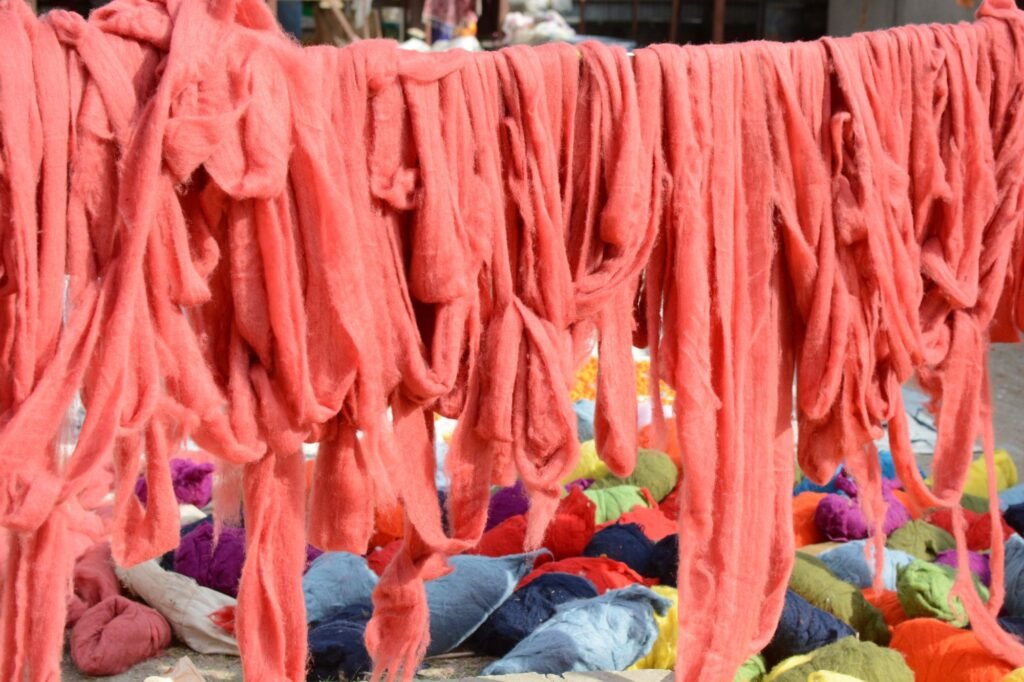
The Unique Characteristics of Wool Felt
Wool felt possesses characteristics that set it apart from other fabrics. Understanding these unique qualities is vital to appreciating its diverse applications and benefits. Natural Insulation: Wool felt’s structure creates air pockets, allowing it to provide exceptional insulation. It effectively traps heat during colder seasons, keeping you warm and cozy while also providing insulation in warmer climates, preventing overheating. Moisture-Wicking Abilities: Wool has natural moisture-wicking properties, meaning it can absorb and release moisture from the surrounding environment. This feature keeps you dry and comfortable by regulating body temperature and preventing the buildup of sweat. Durability and Resilience: Thanks to the interlocking fibers in wool felt, it boasts remarkable durability and resilience. It can withstand repeated use and retains its shape, making it an ideal choice for items that require longevity, such as footwear, bags, and upholstery. Sound and Shock Absorption: Wool felt’s dense structure makes it an excellent material for soundproofing and shock absorption. It effectively dampens noise vibrations, making it ideal for acoustic applications, home insulation, and protective padding. Natural Flame Resistance: Wool is naturally flame resistant, providing an added layer of safety and peace of mind. It has a higher ignition threshold compared to many other materials and self-extinguishes when removed from the flame source. Eco-Friendliness: Wool felt is a sustainable and renewable material. It is biodegradable, non-toxic, and requires minimal processing, making it an eco-friendly choice for those seeking to reduce their environmental footprint. Understanding the historical significance and unique characteristics of wool felt sets the stage for exploring its versatile applications and benefits. In the following sections, we’ll delve into the wide-ranging uses of this remarkable fabric, from fashion and interior design to arts and crafts, and discover how it can enhance our lives in countless ways.Versatile Applications of Wool Felt
Wool felt is a remarkably versatile material that finds its place in a diverse range of applications across various industries and sectors. From fashion and interior design to automotive and industrial uses, wool felt offers a myriad of possibilities and showcases its adaptability in countless ways. Additionally, wool felt has captured the hearts of crafting enthusiasts worldwide, offering a medium for creating unique and beautiful items. Let’s delve into the captivating world of wool felt and discover its versatile applications. In the realm of fashion, wool felt has long been celebrated for its exceptional qualities. Designers utilize this fabric to create stunning garments, accessories, and footwear. The dense and structured nature of wool felt allows for precise tailoring and sculptural designs, making it a favorite choice for statement pieces and avant-garde fashion. From elegant coats and hats to intricate handbags and shoes, wool felt adds a touch of luxury and sophistication to the fashion industry.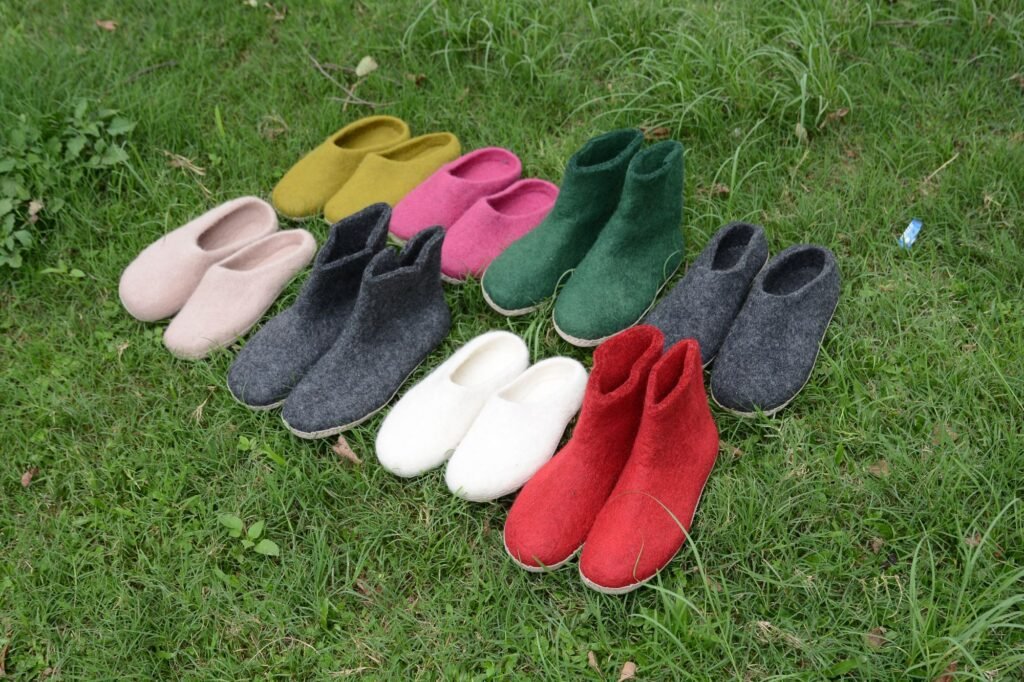 When it comes to interior design, wool felt becomes a transformative element in creating warm and inviting spaces. This versatile material is used for upholstery, wall coverings, and acoustic panels, adding texture, depth, and a sense of coziness to any environment. Wool felt’s natural sound-absorbing properties make it an ideal choice for reducing noise levels and creating acoustically balanced spaces in offices, theaters, and public venues.
In the automotive industry, wool felt plays a crucial role in providing insulation, soundproofing, and protection. It is used as a lining material in car interiors, offering comfort, durability, and enhanced thermal insulation. Wool felt’s ability to absorb and filter sound vibrations contributes to a quieter driving experience, making it a valuable component in automotive design.
Beyond fashion, interior design, and automotive applications, wool felt finds its way into a multitude of industries. In industrial settings, it serves as a protective material, providing cushioning and impact resistance in machinery and equipment. Its durability, heat resistance, and non-abrasive properties make it an ideal choice for gaskets, seals, and precision parts.
When it comes to interior design, wool felt becomes a transformative element in creating warm and inviting spaces. This versatile material is used for upholstery, wall coverings, and acoustic panels, adding texture, depth, and a sense of coziness to any environment. Wool felt’s natural sound-absorbing properties make it an ideal choice for reducing noise levels and creating acoustically balanced spaces in offices, theaters, and public venues.
In the automotive industry, wool felt plays a crucial role in providing insulation, soundproofing, and protection. It is used as a lining material in car interiors, offering comfort, durability, and enhanced thermal insulation. Wool felt’s ability to absorb and filter sound vibrations contributes to a quieter driving experience, making it a valuable component in automotive design.
Beyond fashion, interior design, and automotive applications, wool felt finds its way into a multitude of industries. In industrial settings, it serves as a protective material, providing cushioning and impact resistance in machinery and equipment. Its durability, heat resistance, and non-abrasive properties make it an ideal choice for gaskets, seals, and precision parts.
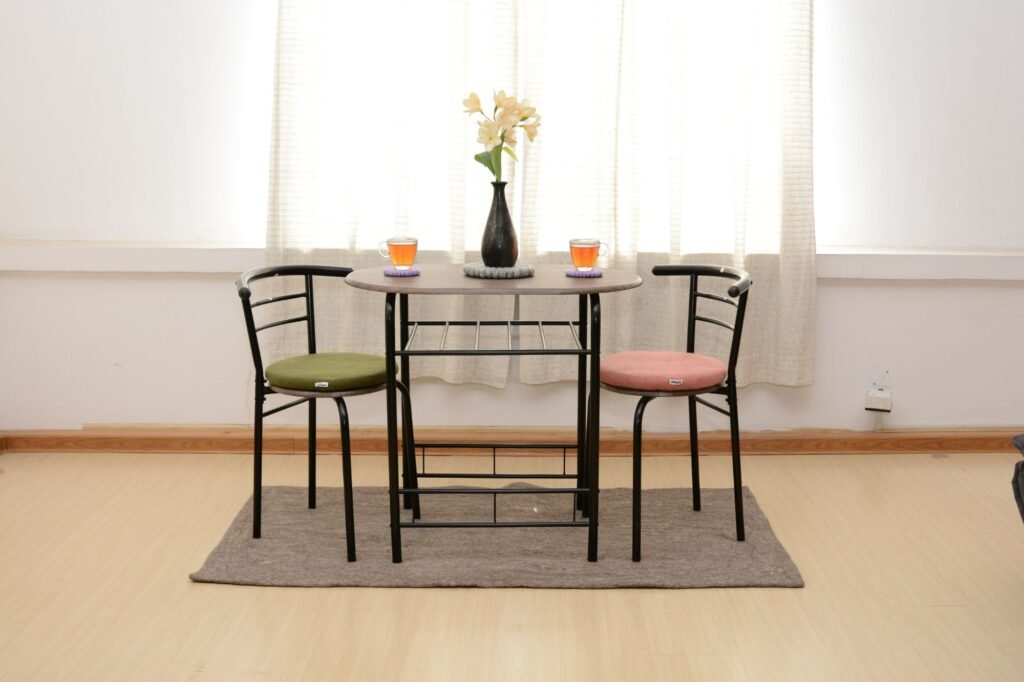 Crafting enthusiasts have also embraced the versatility of wool felt, unleashing their creativity and imagination. From needle felting and appliqué to embroidery and toy-making, wool felt offers endless possibilities for creating unique and beautiful items. Its soft and malleable nature allows for intricate detailing and precise craftsmanship, making it a favorite among artisans and DIY enthusiasts.
The versatile applications of wool felt extend far and wide, making it an indispensable material across numerous industries and sectors. Its remarkable qualities and adaptability enable its seamless integration into diverse contexts, showcasing its timeless appeal and enduring relevance. Whether in fashion, interior design, automotive, industrial uses, or crafting projects, wool felt continues to captivate with its versatility, functionality, and aesthetic charm.
Crafting enthusiasts have also embraced the versatility of wool felt, unleashing their creativity and imagination. From needle felting and appliqué to embroidery and toy-making, wool felt offers endless possibilities for creating unique and beautiful items. Its soft and malleable nature allows for intricate detailing and precise craftsmanship, making it a favorite among artisans and DIY enthusiasts.
The versatile applications of wool felt extend far and wide, making it an indispensable material across numerous industries and sectors. Its remarkable qualities and adaptability enable its seamless integration into diverse contexts, showcasing its timeless appeal and enduring relevance. Whether in fashion, interior design, automotive, industrial uses, or crafting projects, wool felt continues to captivate with its versatility, functionality, and aesthetic charm.
Benefits and Advantages of Wool Felt
Wool felt offers a range of benefits and advantages that make it a remarkable material in various applications. Let’s explore some of the key benefits, particularly its eco-friendly and sustainable properties.Eco-Friendly and Biodegradable
Wool felt is an eco-friendly choice as it is made from natural fibers that are renewable and biodegradable. Unlike synthetic materials derived from fossil fuels, wool is a sustainable resource that can be harvested from sheep without causing harm to animals. When wool felt products reach the end of their life cycle, they can naturally decompose and return to the environment, leaving behind minimal waste.Energy-Efficient Production
The production of wool felt requires relatively low energy consumption compared to many other materials. Wool fibers can be processed using eco-friendly techniques, such as wet felting or needle felting, which involve minimal energy input. Additionally, wool’s unique structure allows it to retain heat effectively, reducing the need for additional energy consumption in heating applications.Carbon Footprint Reduction
Wool felt contributes to reducing carbon emissions and mitigating climate change. Wool fibers have the remarkable ability to absorb and store carbon dioxide from the atmosphere. By choosing wool felt products, you are supporting a material that actively helps reduce greenhouse gas levels and promote a healthier environment.Water Conservation
The production of wool felt requires considerably less water compared to synthetic materials. Wool fibers naturally contain moisture, reducing the need for excessive water consumption during processing. Furthermore, wool’s unique structure allows it to absorb and release moisture efficiently, making it an excellent choice for moisture-regulating applications.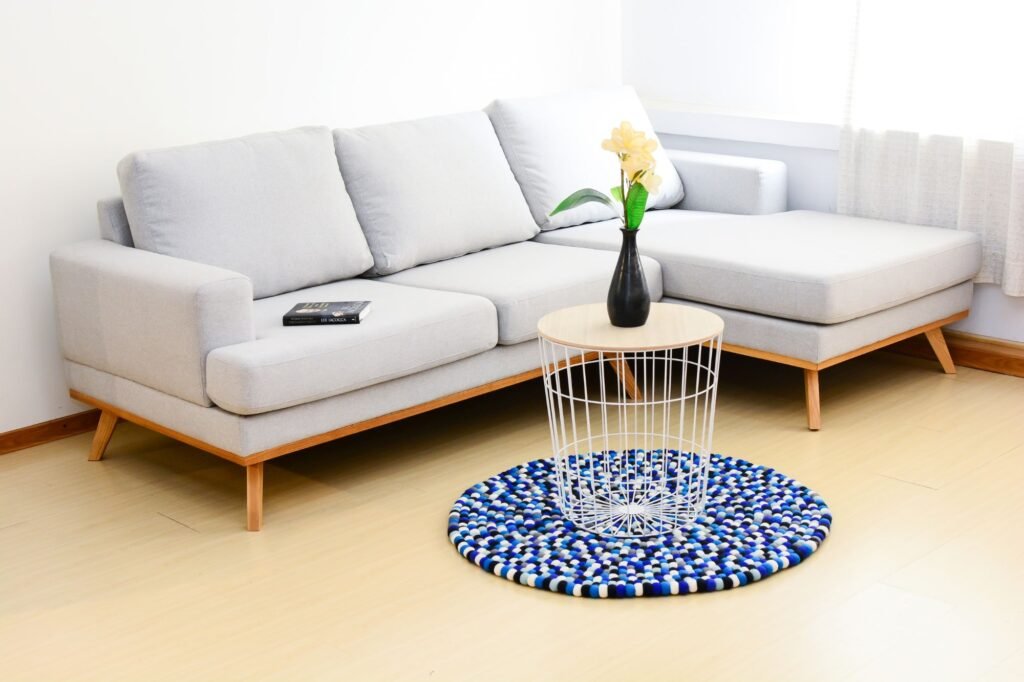
Chemical-Free and Allergen-Free
Wool felt is inherently chemical-free and does not require the use of harmful substances in its production. Unlike some synthetic materials that may contain potentially toxic chemicals, wool felt is a safe and non-toxic option for various applications. Additionally, wool fibers have a natural resistance to bacteria, mold, and mildew, making them a hypoallergenic material suitable for individuals with allergies or sensitivities.Energy-Efficient Insulation
Wool felt is an excellent insulating material, providing thermal insulation and energy efficiency benefits. Its natural fibers trap air within its structure, creating a layer of insulation that helps regulate temperature and reduces heat transfer. Whether used in clothing, home insulation, or automotive applications, wool felt contributes to energy conservation by maintaining comfortable indoor temperatures and reducing the need for excessive heating or cooling.Choosing and Caring for Wool Felt Products
By choosing wool felt, you are opting for a sustainable, eco-friendly, and energy-efficient material. Its biodegradability, low carbon footprint, water conservation, and chemical-free nature make it a responsible choice for various applications. Embracing wool felt not only enhances comfort and functionality but also contributes to a greener and more sustainable future. When it comes to selecting high-quality wool felt products, there are a few key factors to consider. These considerations will help you make informed choices and ensure that you get the most out of your wool felt items. If you’re looking for more insights about felt products, check us out here. Opt for Real Wool Felt: The whole idea of getting into wool felt is going eco-friendly. So choosing synthetic felt alternatives is ironic. So, it’s a no-brainer to opt for those made from natural wool rather than synthetic alternatives. Real wool felt offers superior quality, durability, and natural properties that synthetic materials cannot match. It provides better insulation, breathability, and a luxurious feel. Thickness and Density: Consider the thickness and density of the wool felt product. Thicker and denser felt tends to be more durable and provides better insulation and cushioning. Choose a thickness and density that aligns with your needs and intended use of the item. Color Options: Wool felt comes in a wide range of vibrant and natural colors. Consider the color palette of your space or project and select wool felt products that complement or enhance the overall aesthetic. Whether you prefer bold and vibrant hues or subtle and earthy tones, there’s a color option to suit your preferences.

